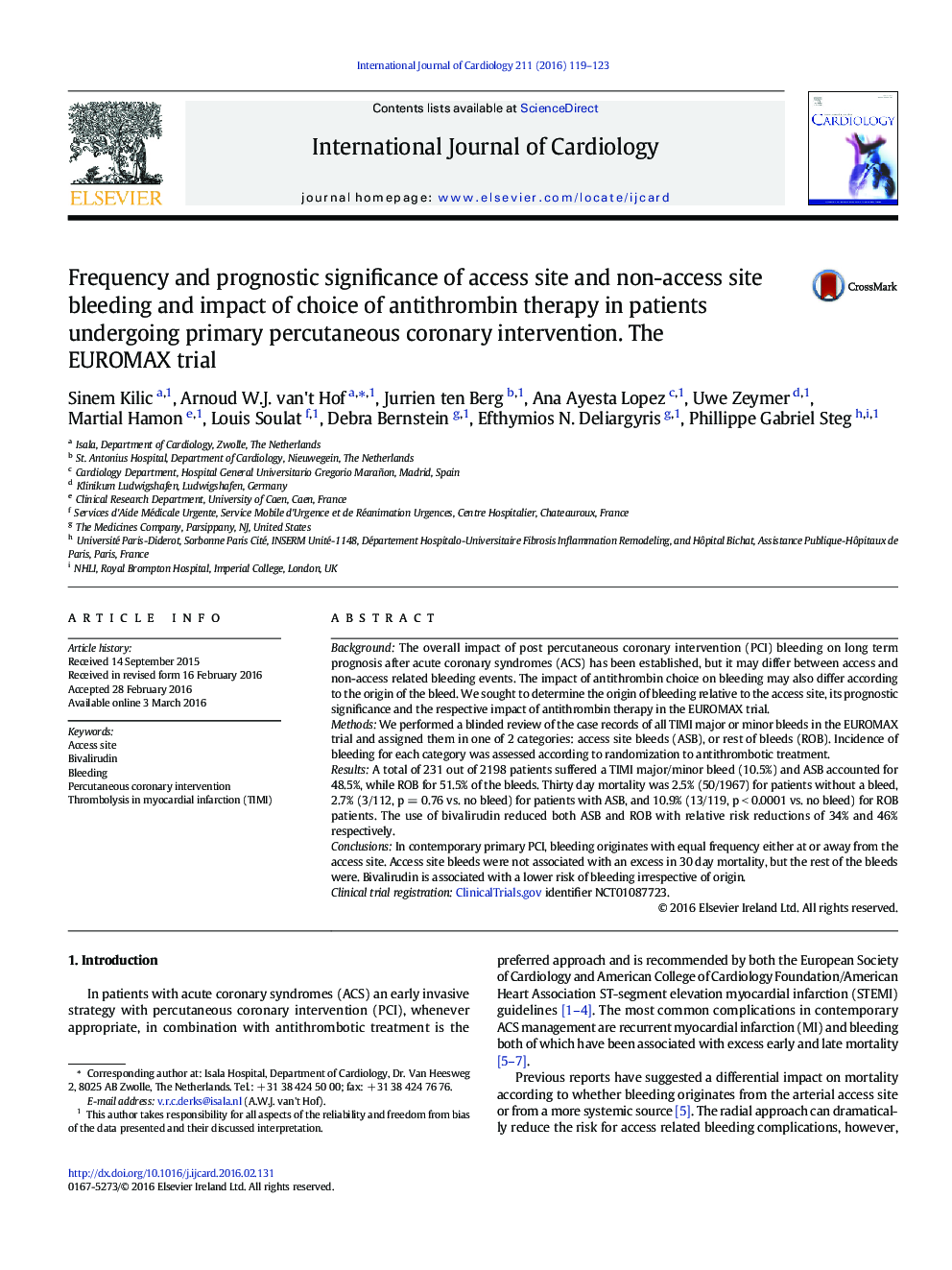| Article ID | Journal | Published Year | Pages | File Type |
|---|---|---|---|---|
| 2928861 | International Journal of Cardiology | 2016 | 5 Pages |
BackgroundThe overall impact of post percutaneous coronary intervention (PCI) bleeding on long term prognosis after acute coronary syndromes (ACS) has been established, but it may differ between access and non-access related bleeding events. The impact of antithrombin choice on bleeding may also differ according to the origin of the bleed. We sought to determine the origin of bleeding relative to the access site, its prognostic significance and the respective impact of antithrombin therapy in the EUROMAX trial.MethodsWe performed a blinded review of the case records of all TIMI major or minor bleeds in the EUROMAX trial and assigned them in one of 2 categories: access site bleeds (ASB), or rest of bleeds (ROB). Incidence of bleeding for each category was assessed according to randomization to antithrombotic treatment.ResultsA total of 231 out of 2198 patients suffered a TIMI major/minor bleed (10.5%) and ASB accounted for 48.5%, while ROB for 51.5% of the bleeds. Thirty day mortality was 2.5% (50/1967) for patients without a bleed, 2.7% (3/112, p = 0.76 vs. no bleed) for patients with ASB, and 10.9% (13/119, p < 0.0001 vs. no bleed) for ROB patients. The use of bivalirudin reduced both ASB and ROB with relative risk reductions of 34% and 46% respectively.ConclusionsIn contemporary primary PCI, bleeding originates with equal frequency either at or away from the access site. Access site bleeds were not associated with an excess in 30 day mortality, but the rest of the bleeds were. Bivalirudin is associated with a lower risk of bleeding irrespective of origin.Clinical trial registrationClinicalTrials.gov identifier NCT01087723.
